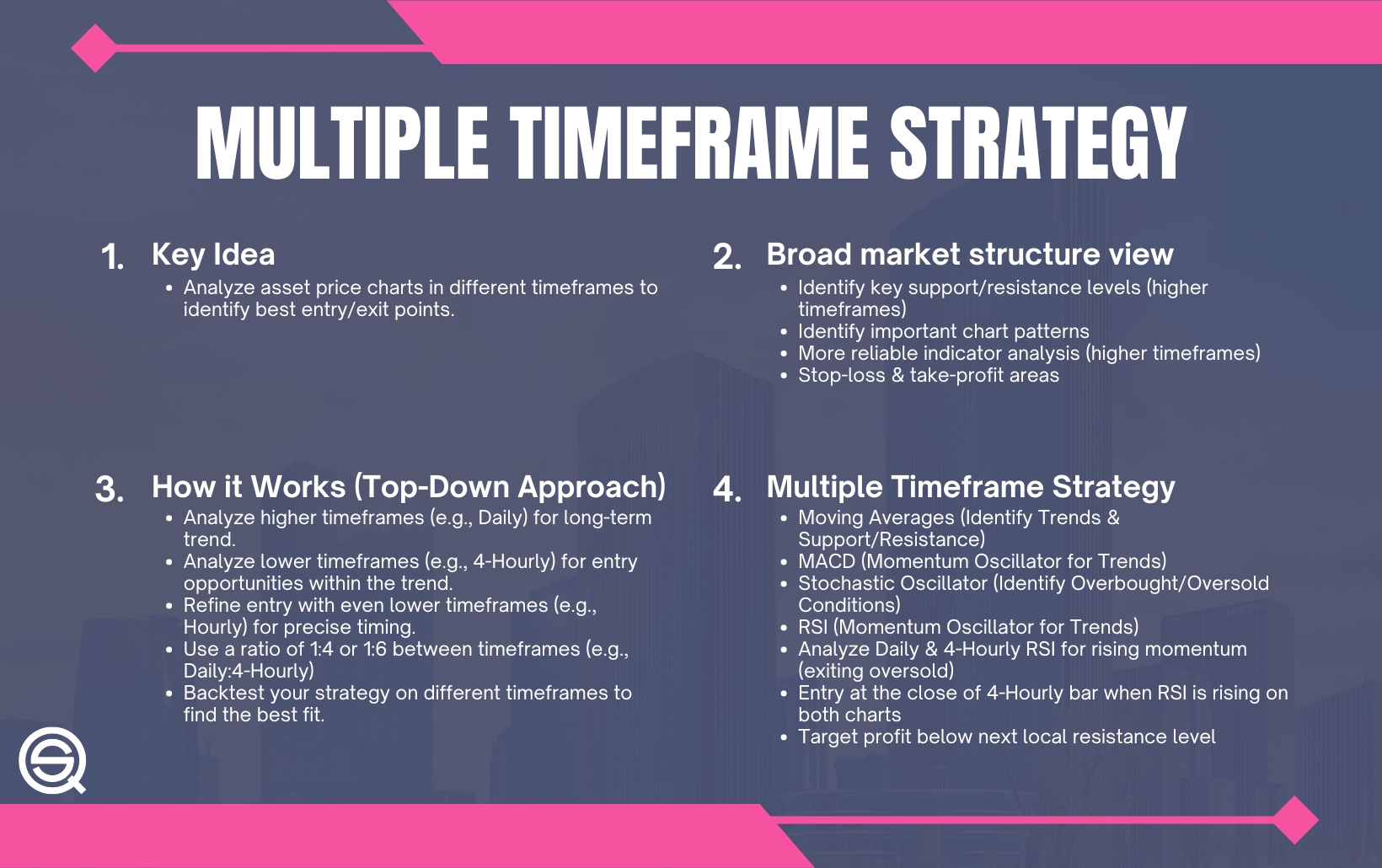Did you know that some traders spend more time backtesting their strategies than actually trading? It’s no surprise, as backtesting is a crucial step in developing successful day trading strategies. This article delves into the fundamentals of backtesting, explaining its significance and how to effectively choose and evaluate strategies. We’ll discuss the tools available for backtesting, how to gather historical data, and key metrics to assess performance. Additionally, we’ll highlight common pitfalls to avoid and how to refine strategies based on backtest results. Whether you're a beginner or seasoned trader, understanding the nuances of backtesting can significantly enhance your trading success. Join us at DayTradingBusiness to elevate your trading game!
What is backtesting in day trading?
Backtesting in day trading involves testing a trading strategy using historical data to evaluate its effectiveness before applying it in real-time. You analyze past market conditions, trades, and outcomes to see how the strategy would have performed. This helps identify strengths and weaknesses, allowing traders to refine their approach and improve decision-making. To backtest effectively, use trading software or platforms that allow you to simulate trades based on historical data, adjusting parameters as needed.
Why is backtesting important for day trading strategies?
Backtesting is crucial for day trading strategies because it allows traders to evaluate the effectiveness of their strategies using historical data. It helps identify potential weaknesses and strengths, ensuring the strategy is robust before risking real capital. By simulating trades based on past market conditions, traders can gauge profitability, optimize parameters, and refine entry and exit points. This process increases confidence in the strategy and enhances decision-making under live market conditions.
How do you choose a day trading strategy to backtest?
To choose a day trading strategy for backtesting, start by defining your trading goals and risk tolerance. Select strategies that align with your objectives, such as scalping, momentum trading, or reversal strategies. Research historical performance data relevant to your chosen strategy to ensure it has potential under various market conditions.
Next, identify key indicators and parameters specific to your strategy, like entry and exit points, stop-loss levels, and profit targets. Use backtesting software to simulate trades based on historical data, adjusting parameters as needed to optimize performance. Finally, analyze the results critically, looking for consistent profitability and risk management effectiveness.
What tools are available for backtesting day trading strategies?
Tools for backtesting day trading strategies include:
1. MetaTrader 4/5: Popular for forex, offers strategy testing features.
2. TradingView: Provides a user-friendly interface with custom scripting for backtesting.
3. NinjaTrader: Offers advanced analytics and a robust backtesting environment.
4. Thinkorswim: Includes paper trading and backtesting capabilities for stocks and options.
5. QuantConnect: A cloud-based platform that supports various assets and languages for algorithmic trading.
6. Amibroker: Known for its speed and flexibility in testing complex strategies.
7. Python Libraries: Libraries like Backtrader or Zipline allow for custom strategy development and testing.
Choose based on your trading style and preferred assets.
How can you collect historical data for backtesting?
To collect historical data for backtesting day trading strategies, you can:
1. Use financial data providers like Bloomberg, Reuters, or Quandl for comprehensive datasets.
2. Access free resources like Yahoo Finance, Google Finance, or Alpha Vantage for stock price data.
3. Utilize trading platforms that offer historical data, such as MetaTrader or TradingView.
4. Download CSV files of historical data directly from exchanges or financial websites.
5. Leverage APIs like Interactive Brokers or Alpaca to programmatically retrieve historical market data.
Ensure the data includes relevant price points, volume, and time frames for accurate backtesting.
What are the key metrics to evaluate during backtesting?
The key metrics to evaluate during backtesting day trading strategies include:
1. Win Rate: Percentage of profitable trades relative to total trades.
2. Risk-Reward Ratio: Average profit per winning trade compared to average loss per losing trade.
3. Maximum Drawdown: Largest peak-to-trough decline in the account balance during the backtest.
4. Sharpe Ratio: Measure of risk-adjusted return, indicating how much excess return is received for the volatility endured.
5. Profit Factor: Ratio of gross profit to gross loss, showing the relationship between wins and losses.
6. Average Trade Duration: Time held for each trade, which helps assess strategy alignment with day trading.
7. Total Return: Overall percentage gain or loss over the backtesting period.
Focus on these metrics to gauge the effectiveness and viability of your day trading strategies.
How do you interpret backtest results effectively?

To interpret backtest results effectively, focus on key metrics like profitability, win rate, drawdown, and risk-reward ratio. Analyze the equity curve for consistency and identify any periods of significant drawdown. Compare results across different market conditions to ensure robustness. Check for overfitting by validating the strategy on out-of-sample data. Lastly, assess trade frequency and duration to align with your trading style.
What common mistakes should you avoid when backtesting?
1. Ignoring Slippage and Commissions: Always factor in transaction costs and slippage, as they can significantly impact profitability.
2. Overfitting the Strategy: Avoid tailoring your strategy too closely to past data, which can lead to poor performance in live trading.
3. Using Incomplete Data: Ensure you have comprehensive and accurate historical data for the assets you're testing.
4. Not Validating with Walk-Forward Testing: Regularly validate your strategy using walk-forward testing to ensure it adapts to changing market conditions.
5. Neglecting Market Conditions: Differentiate between trending and ranging markets; not all strategies work in every market condition.
6. Failing to Account for Psychological Factors: Remember that trading psychology can affect decision-making; backtesting can’t replicate emotional responses.
7. Testing on Short Timeframes: Avoid relying solely on short timeframes, as they can lead to misleading results due to noise.
8. Ignoring Risk Management: Always incorporate risk management rules in your backtesting to gauge real performance potential.
How can you improve a day trading strategy based on backtesting?
To improve a day trading strategy based on backtesting, first, analyze historical performance data for key metrics like win rate, average profit, and drawdown. Identify patterns or weaknesses in your strategy and adjust parameters accordingly. Incorporate different market conditions to see how the strategy performs in various scenarios. Use risk management techniques, such as setting stop-loss orders and position sizing, to minimize losses. Regularly update your backtesting with new data to ensure the strategy remains relevant. Finally, validate improvements with forward testing in a simulated environment before applying them in live trading.
What timeframes are best for backtesting day trading strategies?

The best timeframes for backtesting day trading strategies typically range from 1-minute to 15-minute charts. Many traders prefer 5-minute charts for a balance of detail and noise reduction. Backtesting across different timeframes, like 1-minute for precision and 15-minute for broader trends, can also provide insights into strategy performance. Ensure you test over multiple market conditions and time periods to validate your strategies effectively.
Learn about Best Tools for Day Trading Backtesting
How Can Beginners Effectively Backtest Day Trading Strategies for Success?
To backtest day trading strategies for success, follow these steps:
1. **Select a Strategy**: Choose a specific day trading strategy to test.
2. **Gather Historical Data**: Obtain historical price data for the assets you plan to trade.
3. **Define Parameters**: Set entry and exit rules, stop-loss levels, and position sizes.
4. **Use Backtesting Software**: Utilize tools like TradingView or MetaTrader to input your strategy and data.
5. **Run the Backtest**: Execute the backtest to see how the strategy would have performed historically.
6. **Analyze Results**: Evaluate metrics such as win rate, profit factor, and maximum drawdown.
7. **Refine Strategy**: Adjust your strategy based on insights gained and retest as needed.
This structured approach will help you effectively backtest day trading strategies for better decision-making.
Learn more about: Day Trading Strategies for Beginners
Learn about How to Backtest Day Trading Strategies Effectively
How do you ensure your backtesting is realistic and accurate?
To ensure your backtesting is realistic and accurate, follow these steps:
1. Use High-Quality Data: Obtain reliable historical data with minimal gaps, including intraday pricing.
2. Incorporate Slippage and Commissions: Factor in transaction costs and slippage to simulate real trading conditions.
3. Test Across Different Market Conditions: Validate your strategy during various market environments (bull, bear, and sideways) to ensure robustness.
4. Avoid Overfitting: Keep your model simple and avoid tailoring it too closely to historical data; it should perform well on unseen data.
5. Implement Walk-Forward Analysis: Regularly test and adjust your strategy on rolling data segments to assess its ongoing viability.
6. Use Realistic Position Sizing: Apply sensible risk management and position sizing that reflect your trading capital and risk tolerance.
7. Review and Adapt: Continuously analyze results and refine your strategy based on performance metrics rather than emotional bias.
By adhering to these practices, your backtesting will more accurately reflect potential real-world trading outcomes.
Can you backtest day trading strategies without coding skills?
Yes, you can backtest day trading strategies without coding skills. Use user-friendly platforms like TradingView or MetaTrader, which offer built-in backtesting tools. You can input your trading strategies using their graphical interfaces. Additionally, some brokers provide backtesting features in their trading platforms that require no coding. Look for resources like pre-built strategies or templates to simplify the process.
Learn about How to Backtest Day Trading Strategies Effectively
What is the difference between backtesting and paper trading?

Backtesting involves using historical data to evaluate how a trading strategy would have performed in the past, allowing traders to refine their strategies based on past market behavior. Paper trading, on the other hand, simulates real-time trading without real money, enabling traders to practice executing their strategies in a live market environment without financial risk. In short, backtesting tests a strategy against historical data, while paper trading tests it in current market conditions.
How often should you backtest your trading strategies?
You should backtest your trading strategies regularly, ideally after significant market changes or every few months. This ensures your strategies remain effective under current market conditions. Additionally, backtest whenever you make adjustments to your strategy to confirm their potential performance.
What role does risk management play in backtesting?
Risk management is crucial in backtesting day trading strategies as it helps assess potential losses and protect capital. It allows traders to simulate various risk scenarios, evaluate the effectiveness of stop-loss orders, and determine position sizing. By incorporating risk management, traders can identify the maximum drawdown and ensure that strategies are not only profitable but also sustainable over time. This leads to more informed decision-making and enhances overall trading performance.
How can you adapt backtested strategies to changing market conditions?
To adapt backtested day trading strategies to changing market conditions, regularly analyze market trends and volatility. Adjust your entry and exit points based on current price action and indicators. Incorporate real-time data to refine your strategy, using stop-loss and take-profit levels that reflect market dynamics. Test modifications in a demo account before applying them in live trades. Stay flexible and willing to iterate your strategies as market conditions evolve.
Conclusion about How to Backtest Day Trading Strategies for Success
In conclusion, backtesting is a critical component of developing successful day trading strategies. By utilizing the right tools, collecting historical data, and analyzing key metrics, traders can refine their approaches and enhance their performance. Avoiding common pitfalls and ensuring realistic conditions during backtesting are essential for reliable results. For those seeking guidance and resources in this process, DayTradingBusiness offers invaluable insights to help traders achieve their goals effectively.
Learn about How to Backtest Day Trading Strategies Effectively